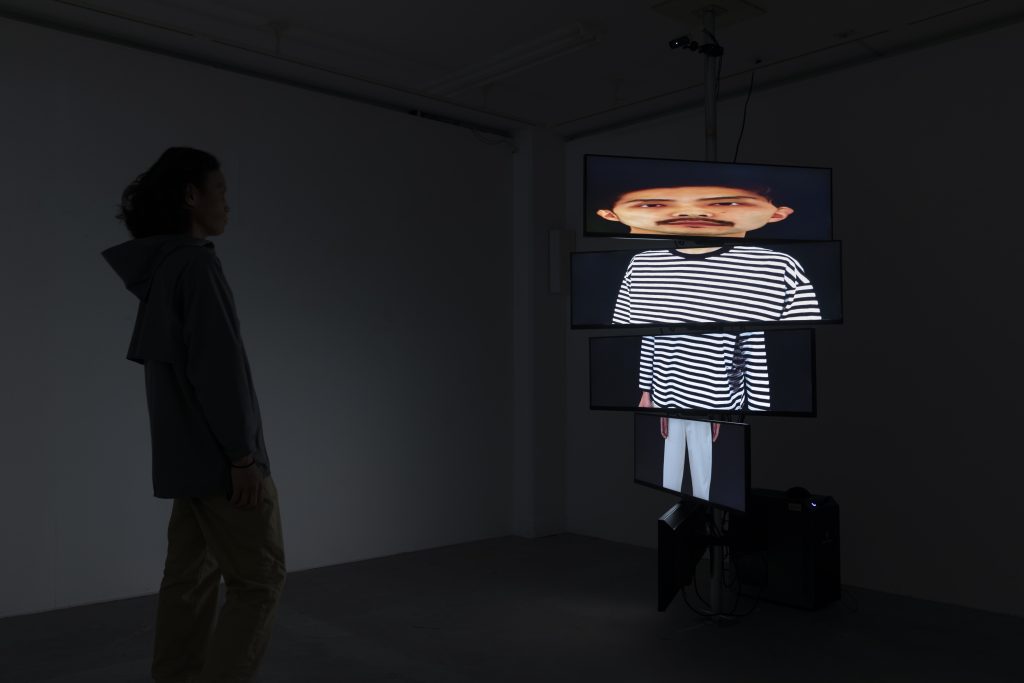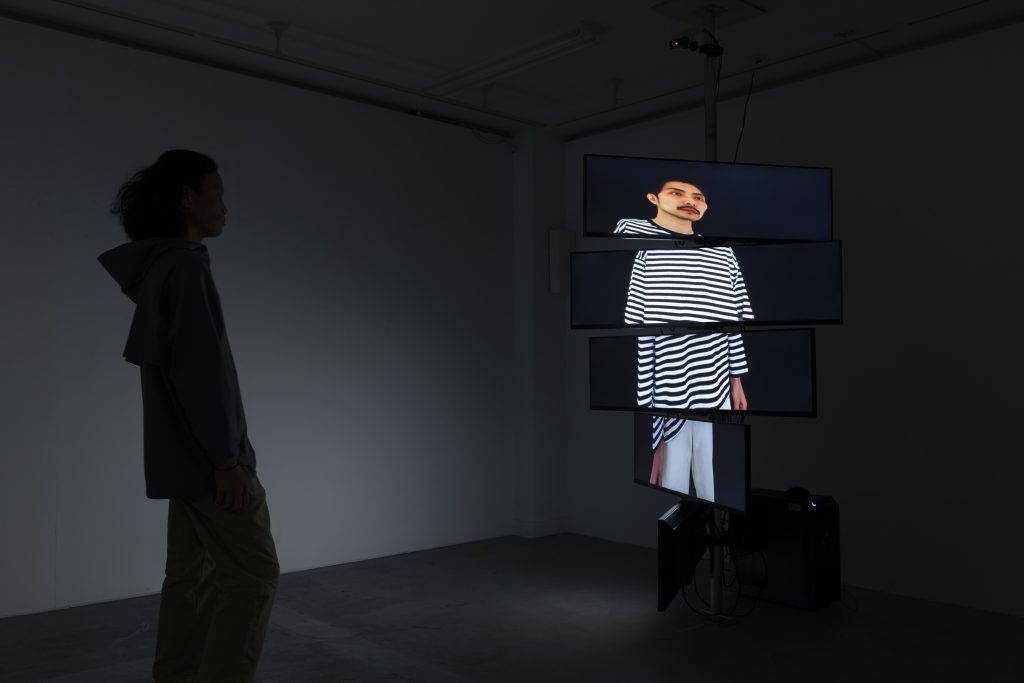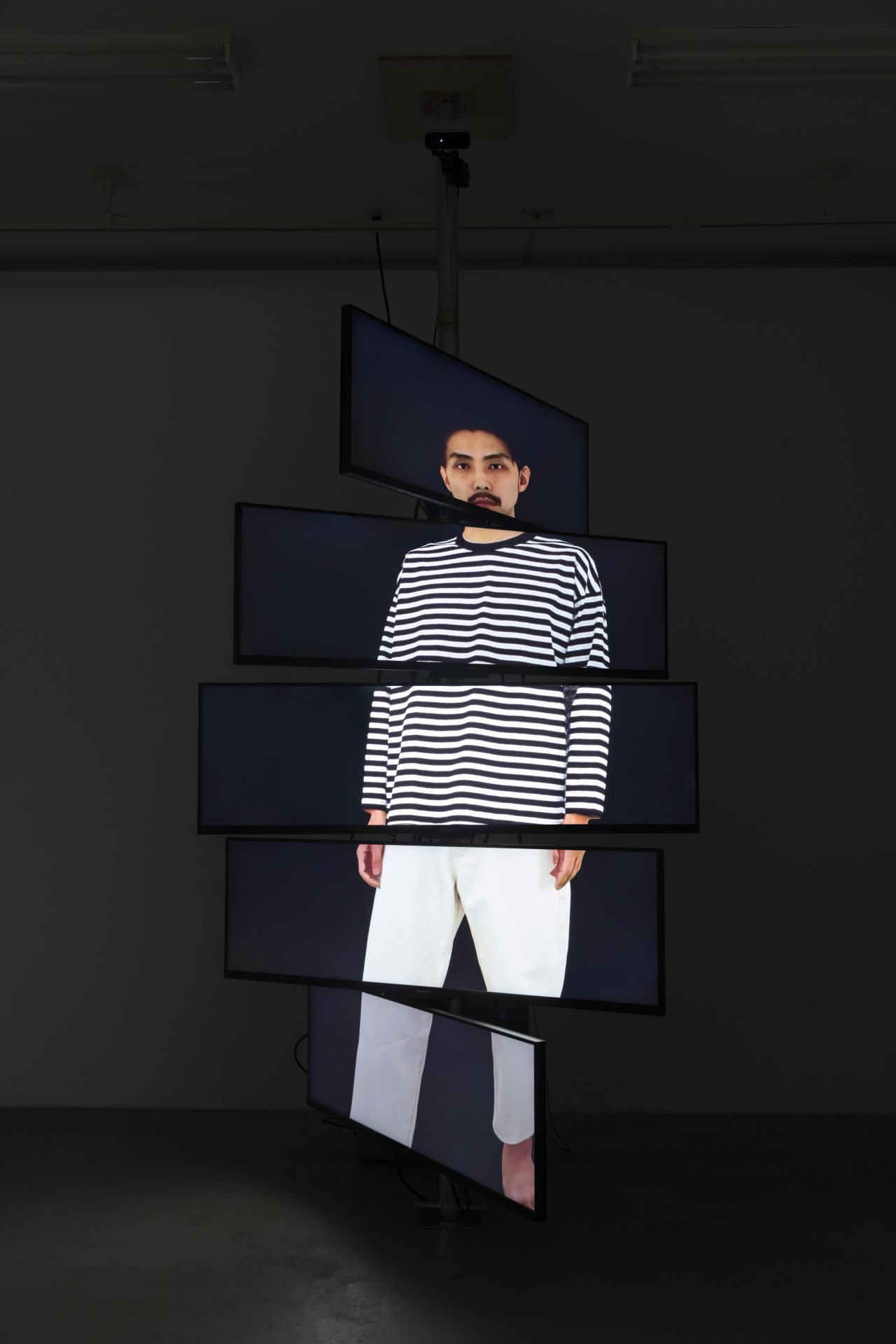Gazes
Takayoshi Ohara
2023
5-Displays, 3D Sensor, PC
W1500 × H2200 × D1000 [mm]
5 台のワイドディスプレイと 3D センサーによって構成される映像インスタレーション作品。
ディスプレイには、ボリュメトリックキャプチャという技術で生成された作者の 3D モデルが映し出され、さまざまな方位に向けて眼差しを送り続ける。本作での映像のパースペクティブを構成する視錐台の頂点は、常にその眼差しの延長線上に配置するよう設定されているため、鑑賞者は常に動的なアナモルフォーシス(歪像)を体験することになる。ただし、鑑賞者の視点がトラッキングされ、その位置に 3D モデルが眼差しを向ける時、つまり鑑賞者と 3D モデルとが「視線を交わす」時にのみ、それぞれ向きの異なるディスプレイ平面に一つの統合的な空間が現前する。
15 世紀に発明された透視図法は、主体/客体という二元論的な世界の捉え方に強い影響力を持ち続けてきた。本作では、仮想空間の成立条件に眼差しの双方向性を設けることで、その境界や主従の関係を溶解するとともに、そこに生じる視覚体験は、次元の併存する現在のリアリティの在り方を提示する。
This video installation consists of five wide displays and 3D sensors.
On the displays, a 3D model of the artist, generated using volumetric capture technology, is shown, continuously casting its gaze in various directions. The apex of the viewing frustum, which defines the video’s perspective, is always aligned with the extension of this gaze, causing the viewer to experience a continuous dynamic anamorphosis. However, only when the viewer’s position is tracked and the 3D model directs its gaze toward them—when their gazes “meet”—does a unified spatial presence emerge across the multiple displays oriented in different directions.
The perspectival system invented in the 15th century has long shaped a dualistic conception of the world, structured around the subject/object dichotomy. In this work, by establishing bidirectionality of gaze as a condition for the formation of virtual space, these boundaries and hierarchies begin to dissolve. The resulting visual experience gestures toward a reality in which multiple dimensions coexist in the present.


